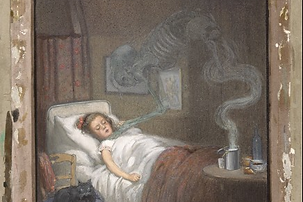
“Louisa Naomi Kent Billings” Pt. 6
Mar 4, 2022
“The long trip to the Gila.” When the War Between the States was over, Rebecca, one of Louisa’s daughters married Young Hardy Stockman on Sept. 16, 1866. Young Hardy referred to his name and not his age. After marriage, Young Hardy and Rebecca left Gillespie County and made their way to the Hackberry Fork of the Nueces River in Kerr County, Texas. From there they moved on to Edwards County, Texas. One of Louisa’s sons, Ammon settled in the same area., While two of Louisa’s sons, William Rily and John Billings settled a little to the west in Val Verde County, TX. The family was beginning to separate. Young Hardy and Rebecca had 10 children, all born after the war had ended. The war that was fought with guns and cannons is now over, but still, another war was raging. This war is the war against epidemic disease, an invisible enemy. How do you fight an invisible enemy? I don’t know in those days, prayer maybe. Until the late 19th century, Diphtheria was a gruesome killer with no known cause and many ineffective treatments. What were the symptoms of Diphtheria? Symptoms ranged from severe sore throat to suffocation due to a ‘false membrane’ covering the larynx. The disease primarily affected children under the age of 5. Until treatment became widely available in the 1920s, the public viewed this disease as a death sentence. By 1890, it was discovered that serum made from the blood of immunized animals contained an "antitoxin" which, when injected, cured patients suffering from Diphtheria that was wonderful, but I wonder how many living the lifestyle of the Stockmans had ready access to the serum. And, of course, it arrived too late for the Stockmans anyway. So, that being the probable case, well, just the constant dread of the invisible enemy was always present and ready to attack. In 1888, Rebecca and Young Hardy Stockman, along with the whole family and Louisa, who was a full-time member of the family, loaded their wagons one more time, still looking for the Promised Land, or at least greener pastures for their herd of sheep and goats, and moved to Del Rio Texas. There, the dreaded enemy, Diphtheria caught up with them. It was said in those days that the disease, when acquired, was a death sentence, and to two of Rebecca’s children, it surely was. To add excruciating injury to more injury, the very day that the two died, Rebecca gave birth to Mary Naline. Before the day was over, she died also. How much grief can a Mother endure? Louisa was eighty-eight years of age when she lost her three Grandchildren. You’d think that would be about as much grief as a Grandmother should have to endure, but a previous epidemic of Typhoid, on a single day, took three of Louisa’s sister’s, Mary Ann’s children. I could never in a lifetime explain why in these two large families, and many others I’m sure, that three were chosen to be taken away. Providence, coincidence, destiny, purpose, I just don’t know. But the other side of the coin may say, “Thank you for the family I have left.” · At this reflection point in our story of “The Trials of Louisa”, or should it be “The Endurance of Louisa”, I would like to take license and inject a side story to emphasize the seriousness of these various disease epidemics down through the centuries. As many of you already know, my canine partners have been a special part of my life and this story is so that we don’t forget. In the story of Balto, tell me, do you think Balto was aware of the desperate mission he was on to save the lives of the men, women and children of Nome, Alaska? Or, was it his complete devotion and determination to the calling of his Masters service. If you’ve had such a dog, I think you know the answer. The Story of Balto, the Legendary Sled Dog.
“Balto is known worldwide as the dog from the Disney movie. This story is based on the real-life 1925 serum run to Nome, Alaska. In midwinter, news reached Anchorage of an imminent epidemic in Nome. Twenty mushers and more than 100 sled dogs relayed antitoxin through dangerous, freezing conditions in an effort to stave off the outbreak. The real Balto led the sled team that made the final leg of this dangerous journey. Balto, a neutered animal, could not be used for breeding and was soon disregarded. A Cleveland businessman found Balto and his team on display in Los Angeles and, outraged at the animals’ state of neglect, worked with the Plain Dealer to have the team brought to the Cleveland Zoo. Balto was taxidermied after his death and is now on display at the Cleveland Museum of Natural History.”
“And That’s My Opinion.”
